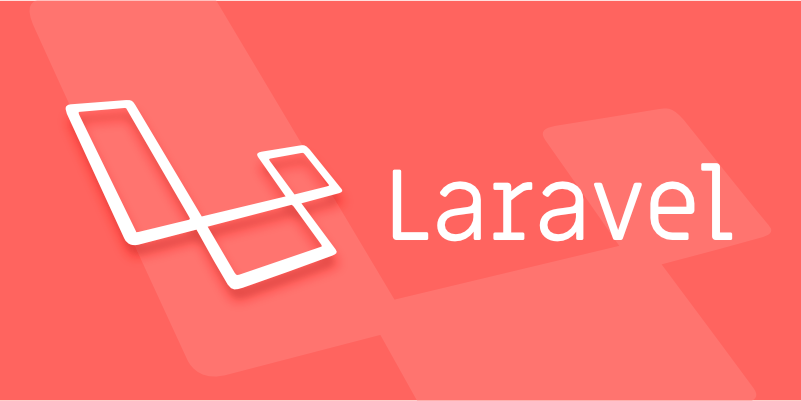Implementing Robust Authorization Logic Using Laravel Gates and Policies
Jul 07, 2025 am 01:40 AMLaravel's authorization logic can be implemented through Gates and Policies; 1. Gates are used for model-independent operations, such as checking whether the user can view the dashboard, define it through Gate::define and verify it with Gate::allows; 2. Policies are used for model-based operations, such as updating permissions to articles, and create corresponding policy classes and register with AuthServiceProvider; 3. Complex logic can be processed in combination with Gates and Policies, such as calling defined Gate rules in the policy; 4. The keys to keep the authorization logic neat include: policy methods focus on single checks, Gates are used for high-level permissions, avoiding mixing business logic, writing tests, and using clear naming.

Laravel provides a powerful and flexible way to manage authorization logic using Gates and Policies , which are essential for controlling what users can do in your application. If you're building an app with different user roles or complex access rules, understanding how to use these tools effectively is key.

Let's break down how to implement solid authorization logic using Laravel Gates and Policies.

What Are Gates and When to Use Them
Gates in Laravel are closings that determine whether a user is allowed to perform a specific action. They're best used for actions that aren't tied directly to a model — like checking if a user can view a dashboard or send a global message.
For example:

Gate::define('view-dashboard', function ($user) {
return $user->isAdmin();
});Then in your controller or Blade views, you can check:
if (Gate::allows('view-dashboard')) {
// Show dashboard
}Use Gates when:
- The action doesn't involve a specific model.
- You need simple, reusable checks across the app.
- You want to define logic outside of policies for clarity.
How to Use Policies for Model-Based Authorization
When your authorization logic revolutions around models (like posts, comments, or users), Policies are the right choice. Each policy corresponds to a model and contains methods for actions like view , create , update , and delete .
To create a policy:
php artisan make:policy PostPolicy --model=Post
Then register it in AuthServiceProvider :
protected $policies = [
Post::class => PostPolicy::class,
];Inside your policy class, define methods like this:
public function update(User $user, Post $post)
{
return $user->id === $post->user_id;
}In your controller, you can now use:
$this->authorize('update', $post);
This approach keeps your model-related permissions clean and organized.
Combining Gates and Policies for Complex Logic
Sometimes, your authorization needs span both model-specific and general rules. That's where combining Gates and Policies shines.
For instance, you might have a gate that checks if a user has a certain role, and then call that gate inside a policy:
Gate::define('manage-settings', function ($user) {
return $user->hasPermission('manage_settings');
});
// In a policy
public function editSettings(User $user)
{
return Gate::allows('manage-settings');
}Or, you might conditionally allow access based on multiple criteria:
public function delete(User $user, Post $post)
{
return $user->id === $post->user_id || $user->isAdmin();
}Using Gates and Policies together give you fine-grained control without repeating code or cluttering your controllers.
Tips for Keeping Your Authorization Clean and Maintainable
Here are some practical tips to keep things manageable as your app grows:
- Keep your policy methods small and focused — each should handle one logical check.
- Use Gates for high-level permissions like "can-access-admin-panel".
- Don't mix business logic into your policies — keep them about authorization only.
- Consider writing tests for your gates and policies to ensure they behave as expected.
- Use describe names so it's easy to understand what each gate or method does later.
Also, remember that Laravel automatically resolves policy methods via method injection, so type-hinting models make things cleaner and easier to read.
That's the core of implementing strong authorization in Laravel using Gates and Policies. It's not overly complicated, but organizing it well makes a big difference in the long run.
The above is the detailed content of Implementing Robust Authorization Logic Using Laravel Gates and Policies. For more information, please follow other related articles on the PHP Chinese website!

Hot AI Tools

Undress AI Tool
Undress images for free

Undresser.AI Undress
AI-powered app for creating realistic nude photos

AI Clothes Remover
Online AI tool for removing clothes from photos.

Clothoff.io
AI clothes remover

Video Face Swap
Swap faces in any video effortlessly with our completely free AI face swap tool!

Hot Article

Hot Tools

Notepad++7.3.1
Easy-to-use and free code editor

SublimeText3 Chinese version
Chinese version, very easy to use

Zend Studio 13.0.1
Powerful PHP integrated development environment

Dreamweaver CS6
Visual web development tools

SublimeText3 Mac version
God-level code editing software (SublimeText3)

Hot Topics
 What are routes in Laravel, and how are they defined?
Jun 12, 2025 pm 08:21 PM
What are routes in Laravel, and how are they defined?
Jun 12, 2025 pm 08:21 PM
In Laravel, routing is the entry point of the application that defines the response logic when a client requests a specific URI. The route maps the URL to the corresponding processing code, which usually contains HTTP methods, URIs, and actions (closures or controller methods). 1. Basic structure of route definition: bind requests using Route::verb('/uri',action); 2. Supports multiple HTTP verbs such as GET, POST, PUT, etc.; 3. Dynamic parameters can be defined through {param} and data can be passed; 4. Routes can be named to generate URLs or redirects; 5. Use grouping functions to uniformly add prefixes, middleware and other sharing settings; 6. Routing files are divided into web.php, ap according to their purpose
 What are policies in Laravel, and how are they used?
Jun 21, 2025 am 12:21 AM
What are policies in Laravel, and how are they used?
Jun 21, 2025 am 12:21 AM
InLaravel,policiesorganizeauthorizationlogicformodelactions.1.Policiesareclasseswithmethodslikeview,create,update,anddeletethatreturntrueorfalsebasedonuserpermissions.2.Toregisterapolicy,mapthemodeltoitspolicyinthe$policiesarrayofAuthServiceProvider.
 How do I create new records in the database using Eloquent?
Jun 14, 2025 am 12:34 AM
How do I create new records in the database using Eloquent?
Jun 14, 2025 am 12:34 AM
To create new records in the database using Eloquent, there are four main methods: 1. Use the create method to quickly create records by passing in the attribute array, such as User::create(['name'=>'JohnDoe','email'=>'john@example.com']); 2. Use the save method to manually instantiate the model and assign values ??to save one by one, which is suitable for scenarios where conditional assignment or extra logic is required; 3. Use firstOrCreate to find or create records based on search conditions to avoid duplicate data; 4. Use updateOrCreate to find records and update, if not, create them, which is suitable for processing imported data, etc., which may be repetitive.
 How do I run seeders in Laravel? (php artisan db:seed)
Jun 12, 2025 pm 06:01 PM
How do I run seeders in Laravel? (php artisan db:seed)
Jun 12, 2025 pm 06:01 PM
Thephpartisandb:seedcommandinLaravelisusedtopopulatethedatabasewithtestordefaultdata.1.Itexecutestherun()methodinseederclasseslocatedin/database/seeders.2.Developerscanrunallseeders,aspecificseederusing--class,ortruncatetablesbeforeseedingwith--trunc
 What is the purpose of the artisan command-line tool in Laravel?
Jun 13, 2025 am 11:17 AM
What is the purpose of the artisan command-line tool in Laravel?
Jun 13, 2025 am 11:17 AM
Artisan is a command line tool of Laravel to improve development efficiency. Its core functions include: 1. Generate code structures, such as controllers, models, etc., and automatically create files through make: controller and other commands; 2. Manage database migration and fill, use migrate to run migration, and db:seed to fill data; 3. Support custom commands, such as make:command creation command class to implement business logic encapsulation; 4. Provide debugging and environment management functions, such as key:generate to generate keys, and serve to start the development server. Proficiency in using Artisan can significantly improve Laravel development efficiency.
 How do I install Laravel on my operating system (Windows, macOS, Linux)?
Jun 19, 2025 am 12:31 AM
How do I install Laravel on my operating system (Windows, macOS, Linux)?
Jun 19, 2025 am 12:31 AM
Yes,youcaninstallLaravelonanyoperatingsystembyfollowingthesesteps:1.InstallPHPandrequiredextensionslikembstring,openssl,andxmlusingtoolslikeXAMPPonWindows,HomebrewonmacOS,oraptonLinux;2.InstallComposer,usinganinstalleronWindowsorterminalcommandsonmac
 How do I define methods (actions) in a controller?
Jun 14, 2025 am 12:38 AM
How do I define methods (actions) in a controller?
Jun 14, 2025 am 12:38 AM
Defining a method (also known as an action) in a controller is to tell the application what to do when someone visits a specific URL. These methods usually process requests, process data, and return responses such as HTML pages or JSON. Understanding the basic structure: Most web frameworks (such as RubyonRails, Laravel, or SpringMVC) use controllers to group related operations. Methods within each controller usually correspond to a route, i.e. the URL path that someone can access. For example, there may be the following methods in PostsController: 1.index() – display post list; 2.show() – display individual posts; 3.create() – handle creating new posts; 4.u
 How do I run tests in Laravel? (php artisan test)
Jun 13, 2025 am 12:02 AM
How do I run tests in Laravel? (php artisan test)
Jun 13, 2025 am 12:02 AM
ToruntestsinLaraveleffectively,usethephpartisantestcommandwhichsimplifiesPHPUnitusage.1.Setupa.env.testingfileandconfigurephpunit.xmltouseatestdatabaselikeSQLite.2.Generatetestfilesusingphpartisanmake:test,using--unitforunittests.3.Writetestswithmeth






